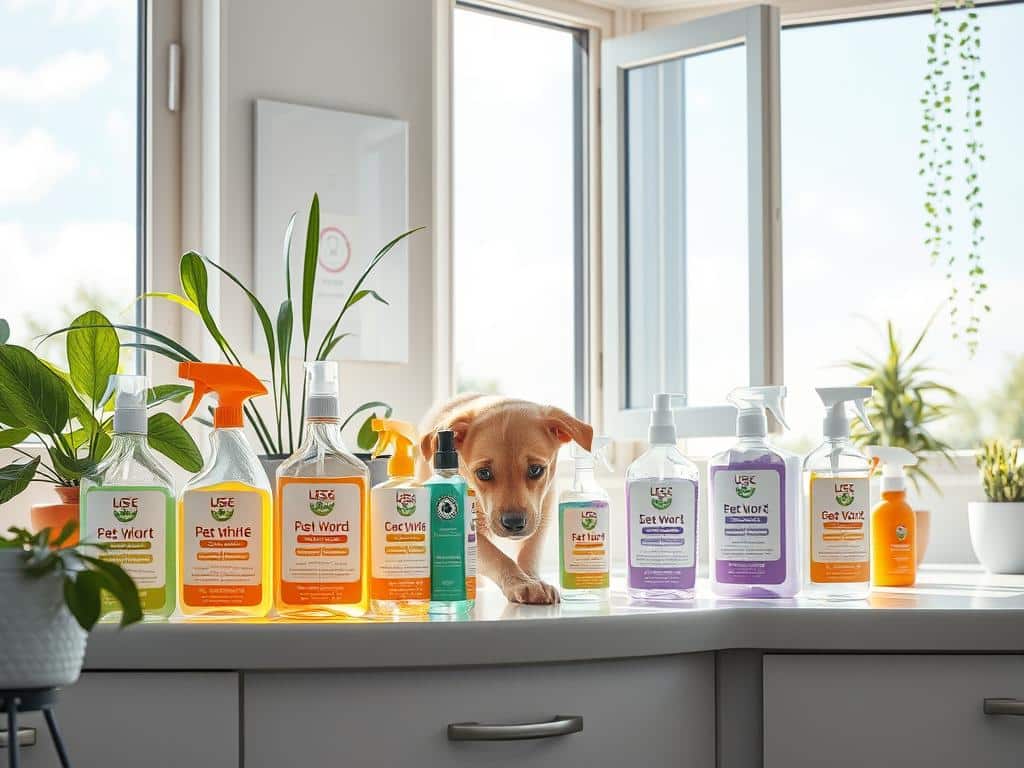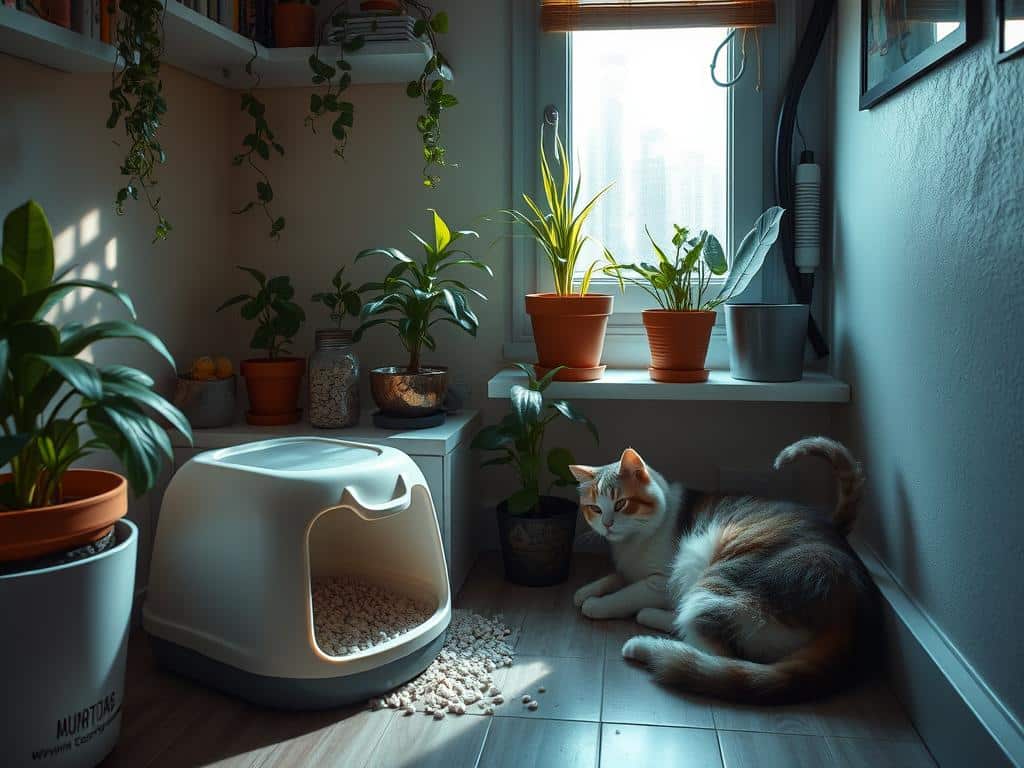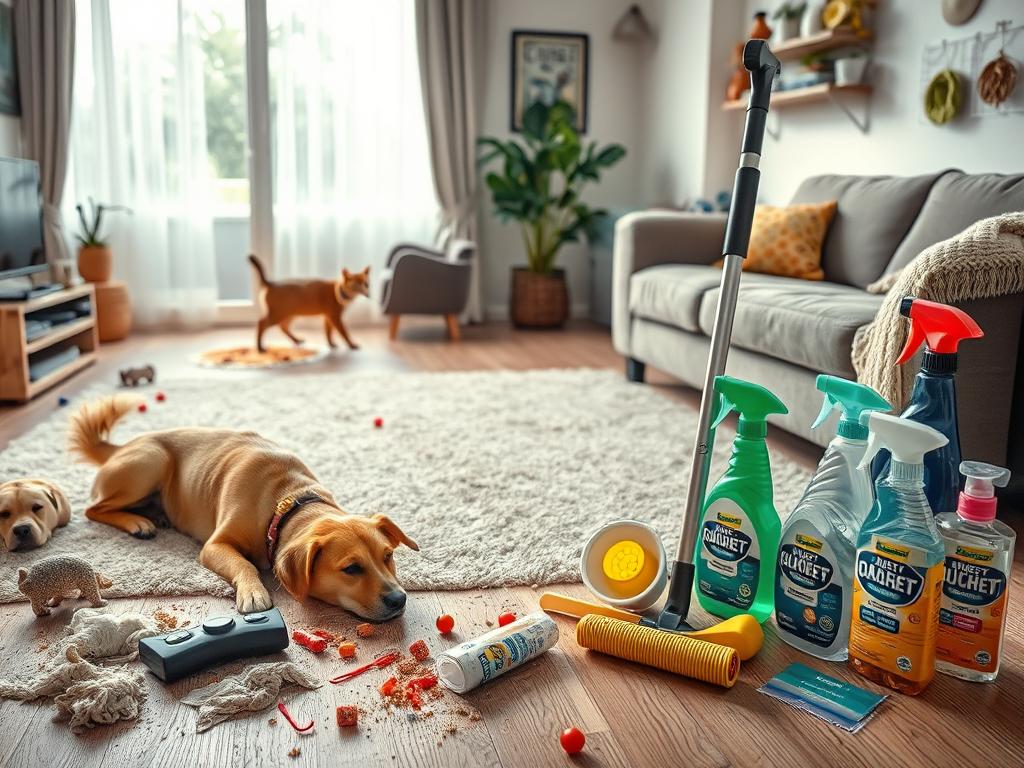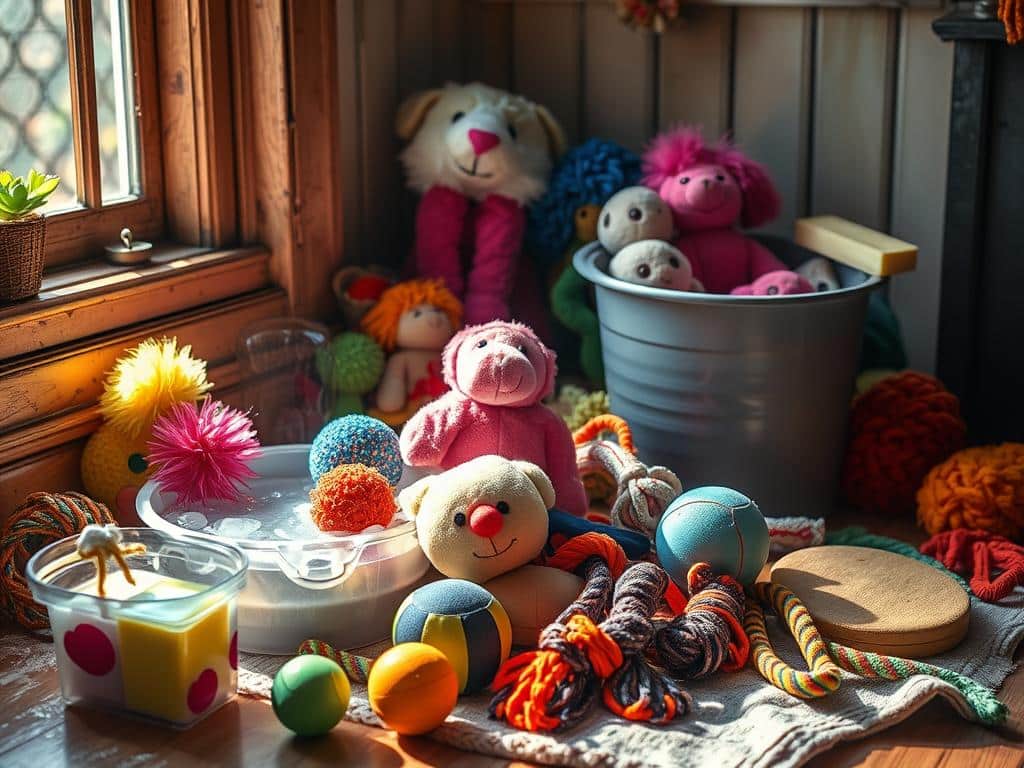
Watching your pet play with their toy brings so much joy. But keeping those toys clean is very important for their health. Dirty toys can hold harmful germs like bacteria, yeast, and mold.
The National Sanitation Foundation found pet toys are super germy. That’s why regular cleaning of pet toys is key to their safety. It can be fun too, with the right tools and some good music.
Having a cleaning routine is vital for your pet’s health. Regularly cleaning toys with safe products keeps harmful germs away. This helps your pet stay safe and happy while playing.
Start protecting your pet’s health today. Clean their toys regularly and safely. This way, they can enjoy a happy, healthy life with their favorite toys.
Why Cleaning Your Pet’s Toys is Crucial
Keeping your pet’s toys clean is key to their health. Clean toys help avoid health problems like skin infections and breathing troubles. This is because dirty toys can have lots of bacteria. Washing toys regularly helps them last longer and prevents bad smells.
Risks of Dirty Pet Toys
Dirty pet toys are full of harmful germs. Pathogens, yeast, mold, and other bad stuff stick to these toys, making pets sick. A slimy layer, called a biofilm, on hard toys can hold lots of bacteria. Plush toys collect dirt, dust, and pollens, making allergies worse.
Benefits of Regular Cleaning
Cleaning your pet’s toys often is a must. This keeps germs away and cuts down on sickness and allergy risks. Keeping toys clean also means they work better and last longer. Washing soft toys in cold water and cleaning hard toys with warm, soapy water helps. A vinegar soak after can make them last even longer. Learn more about keeping pet toys clean by visiting this article.
Cleaning toys every two weeks is good for your pet’s well-being. Avoid strong chemicals to keep them safe. For more on safe cleaning, see this guide.
Sorting Toys by Material
Keeping your pet’s toys clean and lasting long means sorting them by what they’re made of. Sorting toys by material makes cleaning them easier and protects your pet’s health. This part explains the difference between soft pet toys and hard pet toys, and why knowing this matters.
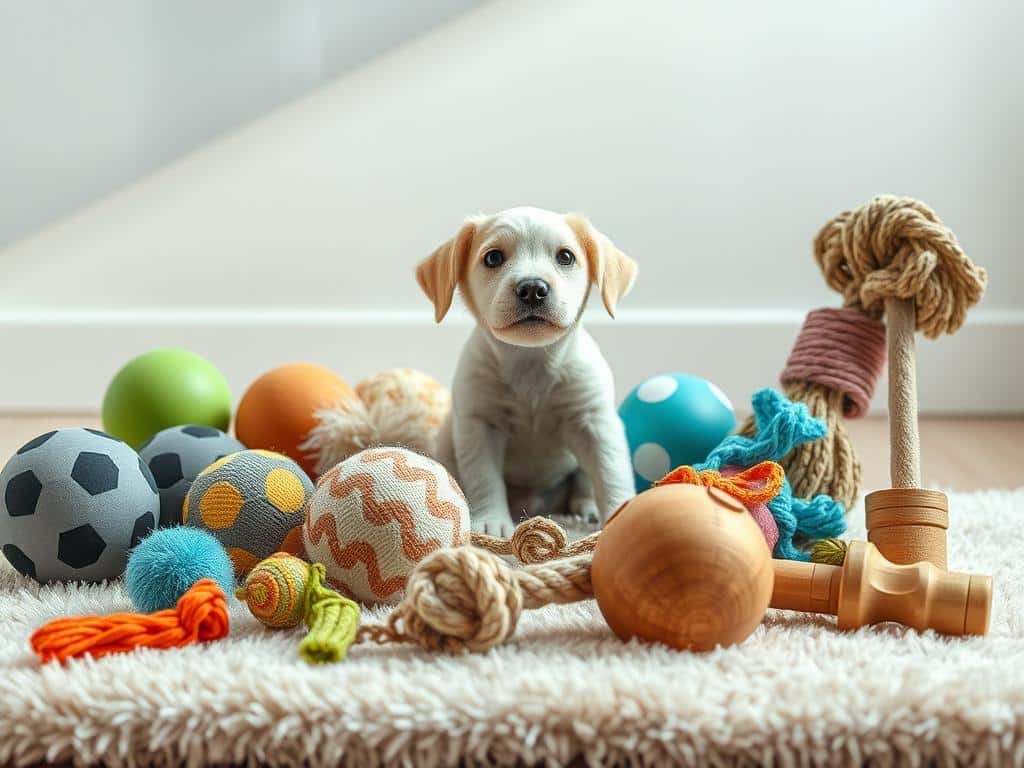
Soft Toys
Soft toys like plushies take a lot of chewing and carrying around. They can collect saliva and germs, so they need regular cleaning. If not cleaned, they can gather dust mites and pet dander, harming both pets and people. Choose machine-washable plush toys for simple and effective cleaning.
Cleaning soft toys keeps them safe and appealing to your pet. For extra germ-killing, mix white vinegar with water and use it to clean. To keep the toys smelling fresh, sprinkle baking soda on them, wait a bit, then shake it off.
Hard Toys
Hard pet toys, like balls and chew toys, are easier to clean. They don’t soak up saliva and germs but still get dirty. These toys need regular washing to stay clean and safe from bacteria.
Hard toys last longer and are easy to clean thoroughly. Use soap and warm water to wash all surfaces. A vinegar soak can deeply clean and kill bacteria.
In conclusion, knowing your pet toy materials and sorting them into soft and hard categories improves cleaning. Washing and disinfecting toys regularly boosts your pet’s health and keeps their toys in good shape.
Cleaning Soft Plush Toys
Keeping your pet’s soft plush toys clean is key to their health. Clean toys prevent bacteria and allergens from building up. This makes playtime both safe and fun. Whether machine or hand washing, it’s key to use the right method to keep the toys in good shape.
Machine Washing Instructions
Washing plush toys in the machine is easy. Just follow these steps:
- Put the toys in a mesh laundry bag to keep them safe during the wash.
- Choose a gentle cycle with cold or lukewarm water to avoid fabric damage.
- Use a mild detergent. Make sure it’s safe for kids’ clothes to keep it safe for pets.
- After washing, check toys for any soap left. Rinse again if you need to.
Hand Washing Method
For toys with delicate fabric or details, hand washing is best. Here’s what you should do:
- Start by filling a basin with warm water and a bit of mild soap.
- Dip the plush toy in and gently scrub with a cloth or sponge.
- Rinse the toy well in clean water to get all the soap out.
- Press out extra water gently. Don’t wring it to avoid fabric damage.
Drying Soft Toys
Drying pet toys right is vital to stop mold and keep their shape. Air drying is best:
- Wrap the toy in a clean, dry towel. Roll it gently to take out most of the water.
- Put the toy in a spot with good air flow, like in the sunlight, to dry completely.
- Don’t use a dryer. The heat could harm the fabric and any plastic parts of the toy.
Follow these steps to wash plush and fabric pet toys. This ensures your pet has a safe, clean playtime. Regularly cleaning toys is a simple way to look after your pet’s health.
Cleaning Hard Toys
It’s important to keep your pet’s hard toys clean for their health and safety. Use warm water and mild dish soap to clean them. This method gets rid of dirt on all toy surfaces.
- Start by mixing warm water and a bit of mild dish soap in a basin or sink.
- Soak the hard toys in this soapy solution to loosen dirt and grime.
- With a brush or sponge, scrub every part of each toy. Pay extra attention to grooves and crevices where dirt hides.
- Rinse the toys well with clean water to take off any soap left.
- Let the toys air dry fully before giving them back to your pet. This ensures no moisture is left to attract bacteria.
For rubber chew toys, which may gather more germs, use natural cleaners like baking soda and white vinegar. These are safe and work well. Clean your pet’s hard toys often, every few days is best, to keep them hygienic and make them last longer.
Rubber or nylon toys can often go in the dishwasher for easy cleaning. Just make sure they are safe for dishwashers first. Dishwashers are great for getting rubber toys free of germs since the heat kills bacteria well.
Dishwasher or not, don’t forget to also scrub plastic pet toys regularly. Having a cleaning routine stops harmful bacteria from growing. Cleaning all your pet’s toys keeps their playtime safe and keeps them healthy.
Disinfecting Pet Toys Safely
It’s key to keep your pet’s toys clean for their health and yours. But it’s just as crucial to disinfect them safely. This kills harmful germs and keeps the area clean. Make sure to use safe cleaners to avoid toxic chemicals, keeping everything healthy.
Natural Disinfectants
Natural solutions are best for cleaning your pet’s toys. A mix of water and white vinegar works great. It cleans and sanitizes without harsh chemicals. For soft toys, soak them in the vinegar solution for 10 minutes, then rinse and air dry. This method is safe and avoids dangerous chemicals.
Avoiding Harmful Chemicals
Be careful to not use toxic chemicals when cleaning toys. Items like bleach can be dangerous if your pet swallows or breathes them in. Choose pet-safe disinfectants and always read the labels. You can use a vinegar solution or baking soda as natural options. Rinse and air dry toys well after cleaning to ensure they’re safe.

